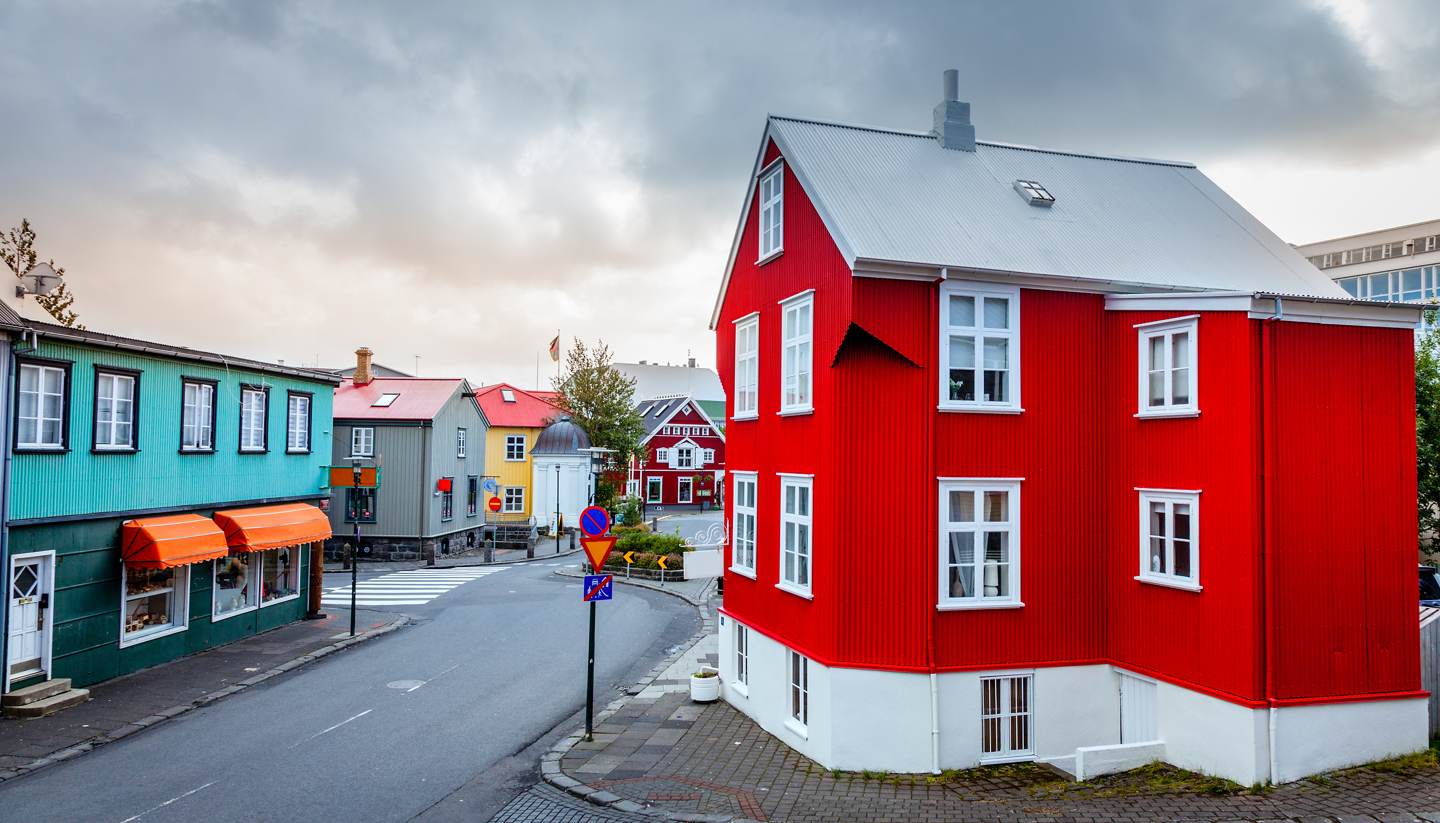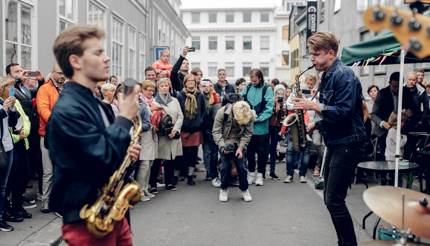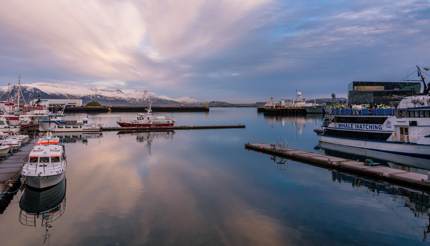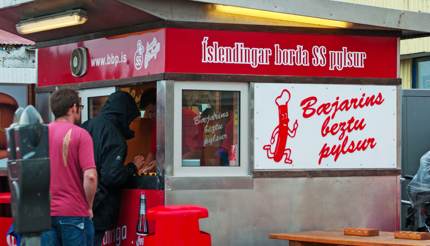Reykjavik is well-known for its geothermal pools and volcanic landscape, but did you know that its hotdogs are a must-try snack?
Clinging to the southwest coast of Iceland, Reykjavík, the world’s most northerly capital, is famous for its multi-coloured wooden houses, steaming geothermal pools, world-class restaurants and a famously hedonistic nightlife. This is one of the best places to experience the natural phenomena: the midnight sun and polar night. Midnight sun refers to the sun stays above the horizon for the whole day while polar night is the opposite.
Best time to go
With temperatures averaging 7C (45F) in May, flowers start to fill the parks and migratory birds arrive to feed, spring (April to May) is a lovely time in Reykjavík, particularly for budget-conscious travellers who prefer lesser crowds and cheaper prices.
Summer (June to August) sees many travellers come to enjoy the famed midnight sun and a string of activities, keeping hotel prices high.
Autumn (September to November) is not a bad time to visit. Temperatures plummet to 2C (36F) in late autumn but Reykjavík heats up with the hedonistic Iceland Airwaves Music Festival.
Winter (December to March) is long and hard, but many come to catch a glimpse of shimmering Northern Lights.
Getting around
Public transport in Reykjavík is excellent. For visitors, it is best to purchase a Reykjavík City Card which allows unlimited transport on buses within the city area, a ferry ride to Viðey, and free entry to many museums and thermal pools. For more info on public transport, taxi, car hire and bicycle rental, see the Getting around Reykjavík guide.
Must-see attractions
Old Harbour
All the whale- and puffin-watching tours start from the Old Harbour, the same is also true for most of the walking tours in Reykjavík. The Old Harbour is also home to a couple of museums, many galleries and excellent restaurants.
Heita Potturinn
Heita Potturinn, or Hot Pots, are geothermal pools that can be found across Iceland. The biggest one in Reykjavik is Laugardalslaug, boasting outdoor pools, waterslides, a sauna and several thermal baths of various temperatures for you to relax in. An important part of Icelandic life, these pools provide numerous health benefits and are a great way to engage in local Icelandic culture.
Thjódminjasafn Íslands (National Museum of Iceland)
Established in 1863, the National Museum of Iceland has since accumulated a massive collection of relics and tools, starting with the Viking period and spanning the next 11 centuries.
For more must-see recommendations, check out our Things to see in Reykjavik guide.
Quirky & offbeat
Hike Mt Esja
Mt Esja towers 914m (3,000ft) over Reykjavik, creating an impressive backdrop for the city. There are several walking trails which you can follow to the peak, and the view from the top is simply stunning. Be aware that taking part in the climb is entirely dependent on weather conditions.
Go lake fishing
Iceland’s clear lake waters and rugged landscape will entice any fishing fan to grab a rod and try their hand at snagging a salmon or trout. Iceland’s largest lake, Þingvallavatn, is less than an hour from Reykjavik and makes an ideal fishing location. Just don’t forget to pick up a fishing licence before you go.
For more fun things to do in and around the city, see our Things to do in Reykjavik guide.
Travel tips
Must-try foods in Reykjavik
• Brennivín – Iceland’s signature alcoholic beverage is made from potatoes and flavoured with herbs such as caraway and cumin.
• Pönnukökur – These delicious thin pancakes are served rolled up with jam or whipped cream.
• Skyr – Technically a cheese but often regarded as a yogurt, skyr is made from pasteurised skimmed milk and has a thick and creamy texture.
• Pylsur – These hotdogs are primarily made from lamb and are accompanied by onions, raw and fried, mustard and ketchup.
• Harðfiskur – A popular snack, this dried fish, usually cod, haddock or ocean catfish, is dipped in salted butter before eating.
This Reykjavik food & drink guide: 10 things to try in Reykjavik, Iceland shares what to try and where to find them.
Tipping: Tipping is not expected, but be aware that a service charge is added to most bills.
Hotels in Reykjavik
Hotels in Reykjavik are typically clean and comfortable, with a focus on classic Scandinavian design. Hotel Borg is a firm favourite with VIP visitors, offering luxury rooms in a glamorous Art Deco style. For something more budget-friendly, Hotel Cabin, with its simple and practical rooms, is a prime choice. Check out our Reykjavik Hotels guide for more accommodation recommendations.
Nightlife in Reykjavik
Despite being a small city, Reykjavik’s nightlife is exciting and diverse. Start your night off by going for a drink at Kaffibarinn. This bohemian bar has a cosy and arty atmosphere. If you enjoy dancing the night away, head to Austur – one of the hottest clubs in Reykjavik. With the party starting at around 10pm and continuing well into the early hours, you’ll have the time of your life here. For more great places to party, see our Reykjavik Nightlife guide.
Shopping in Reykjavik
With chic shopping districts, humble flea markets and spectacular shopping malls, Reykjavik makes for a diverse shopping experience. Laugavegu and Skólavödustígur are the main shopping streets, offering a brilliant selection of boutique shops, arts and crafts galleries and jewellery studios. Take a look at our Shopping in Reykjavik guide for the best places to shop in the city.
Visa requirements to Reykjavik, Iceland
Nationals from the USA, Canada, Australia, the UK or the EU do not require a visa to visit Iceland for up to 90 days. For EU travellers, your passport must be valid for the duration of your stay in Iceland. For non-EU travellers, passports must be valid for three months after your length of stay. Some EU citizens, such as those from Austria, France or the Netherlands, can enter Iceland with a national ID card. Take a look at our Iceland Visa and Passport Requirements guide to find out which type of travel document you’ll need.
Before you go, see:









